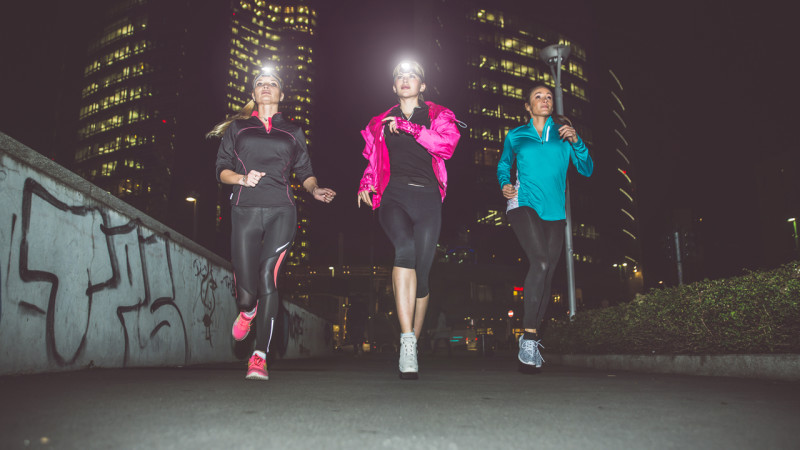Klaus Torno, the traffic safety advisor at the district police authority, draws attention to the need to equip yourself with reflectors and light-colored clothing in road traffic during the darker months of the year. This is the only way to be seen by other road users.
Or, as happened on the evening of November 18 in Ahlsen-Reinberg, it can have dire consequences. At that time there was a head-on collision between two cars on Ahlsener Straße after an Audi driver avoided a jogger running on the right side of the road and ran into oncoming traffic. The recreational athlete did not wear reflectors on his clothing. “We are not aware of any other accidents this autumn/winter season that can be traced back to a lack of visibility. That is gratifying and we want to hope that it stays that way,” said district police spokesman Ralf Steinmeyer in an interview with this newspaper.
He noted that citizens are becoming increasingly aware of the dangers, especially in the dark season, and that the streetscape is increasingly characterized by people who, for example, wear safety vests and are equipped with reflective tape material. According to his subjective perception, this was still different five or six years ago. The corresponding policy campaigns fall on fertile ground, although, as can be seen in the accident in Ahlsen, the common sense of the weaker road users cannot be appealed to often enough. Especially since this autumn/winter, due to the corona, the actions under the motto “Visibility brings safety” by the police in the municipalities in Altkreis had to be canceled.
Road safety advisor and police chief inspector Klaus Torno have been on the road for the campaign since 2013. “The reason for the start was a series of accidents that year that resulted in the death of seven pedestrians in six weeks.” Also in his perception, “a lot has happened”. Whether old or young, many can be seen in traffic in the dark with safety vests.
“Make yourself visible,” says Torno. And that doesn’t just apply to what is worn on the body. “Rollators, umbrellas, we’ve put stickers on everything.” The campaign was very well received every year. Joggers can use special vests that are more breathable than conventional ones. “You don’t sweat under it while running.” The diverse range also includes throws. However, attention must be paid to additional reflectors.
“It is important to be recognizable from afar from all sides. If you stand to the side of the street, something should light up there too,” advises the expert. The safety vest also has to be increased. On the standard version, there would only be two reflective chest rings. For pedestrians and especially children with their small body size, however, it is crucial to trace the body contours that are reflected as a light reflex for the driver or cyclist. This can be achieved with reflector click tapes, which should also be used. Just click around your arm and leg and be seen better immediately. “This is also called the ‘body language concept’,” says Klaus Torno.
The traffic safety advisor regrets that the ADAC has stopped distributing safety vests free of charge to all school beginners for reasons of cost. “That was a great part.” He recommends parents not buy the cheapest version of the vest for their children, but rather focus on quality.
The expert also has tips ready for the older generation. A rollator can be equipped with lighting set in addition to the reflective material. “This directs the driver’s attention very well and at an early stage to the respective person.” Seniors, in particular, have an immensely high risk of injury, accidents usually have worse effects and the injured elderly person’s regeneration is much slower. Of course, it is also important for cyclists to be seen, but also to recognize passers-by in good time. Some older bicycle models only have a “sparkle” instead of a reasonable lamp, which then reacts worse to the reflectors.
Klaus Torno remembers two fatal accidents in 2013, one in Bad Oeynhausen, the other in Hille. While in one case a passer-by was fatally carried by a shopping trolley that was hit by a car and carried her away, in the other case it was a woman who simply put her garbage can (“This can also be made recognizable”) on the street wanted to bring. That brief moment was enough to be overlooked.

